OPERATION PANGOLIN (PART TWO)
Back to the wild: The painstaking, often heartbreaking process of returning poached pangolins to their natural habitat
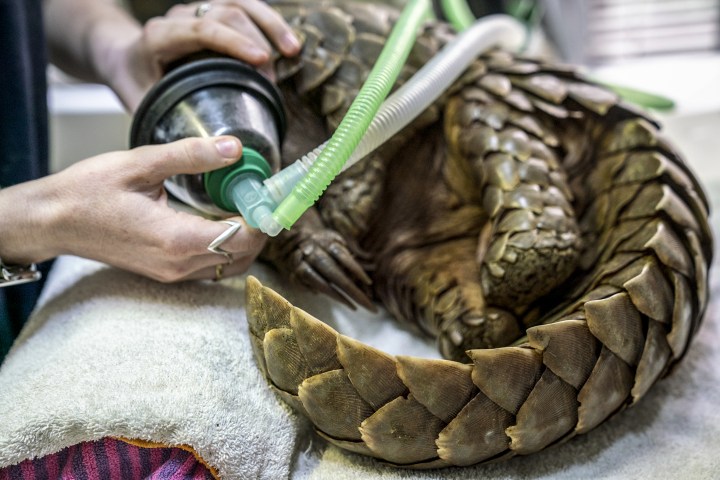
In part two of our series on pangolin poaching, we look at what it takes to rehabilitate and release back into the wild a pangolin rescued from the illegal wildlife trade.
It’s late at night and researcher Francois Meyer and wildlife monitor Hannah Sharp stand in the bush on a Big Five game reserve in the heart of Limpopo. They have been waiting since early afternoon for Bumper, a young sub-adult male pangolin, to come out of his burrow so they can weigh him and collect scat (faecal droppings) samples for Meyer’s research.
Read Part one: The Sting: Meet the men and women risking their lives to save pangolin from being trafficked through a global criminal network
Meyer holds a master’s degree in zoology and is currently working towards a PhD focusing on pangolins rescued from the illegal wildlife trade with a particular interest in how captivity, rehabilitation and release affect the animals’ stress levels compared with the stress they experience in their natural environment.
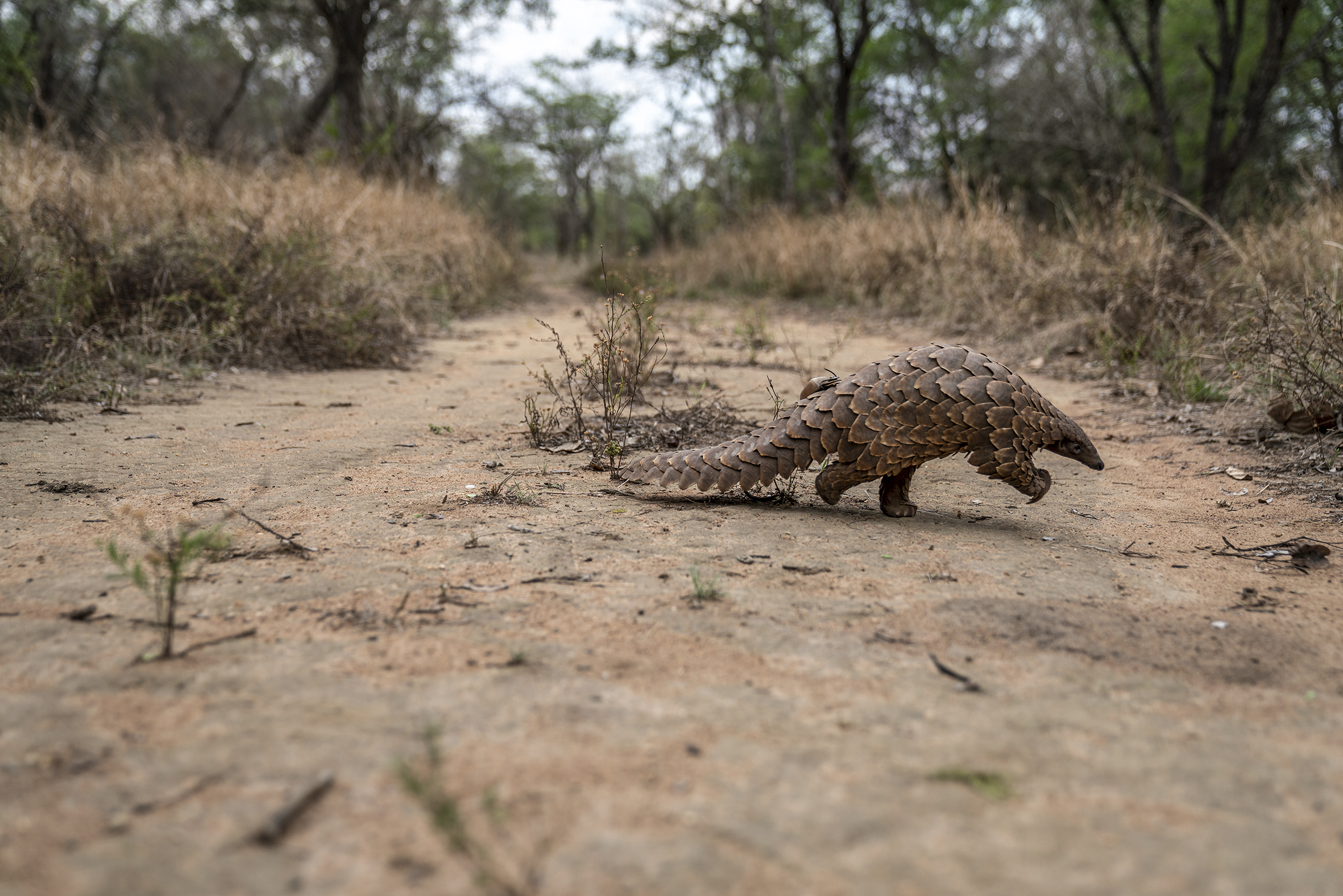
A rescued pangolin forages for food in Limpopo. (Photo: Shiraaz Mohamed)
On the reserve, the only source of light comes from their cellphones and torches. Being on a Big Five game reserve makes them vulnerable to animal encounters. Meyer has had close encounters with a cheetah as well as an elephant bull in musth. While Meyer escaped unscathed, the bull damaged his Land Rover.
“Don’t worry, if there is any sign of trouble, we will pick it up on Silver’s behaviour,” Meyer assures Daily Maverick, as he smiles at his dog.
Bumper eventually makes his way out of his burrow, and Meyer and Sharp follow from a distance. They wait for the ideal moment to collect his scat samples and to measure his weight. But Bumper makes his way to a new burrow and settles in. Moments later a storm hits. Although disappointed that he was unable to collect his samples, Meyer seems delighted at Bumper’s behaviour. “It is as if he knew the storm was coming, so he went into a more suited burrow,” Meyer says.
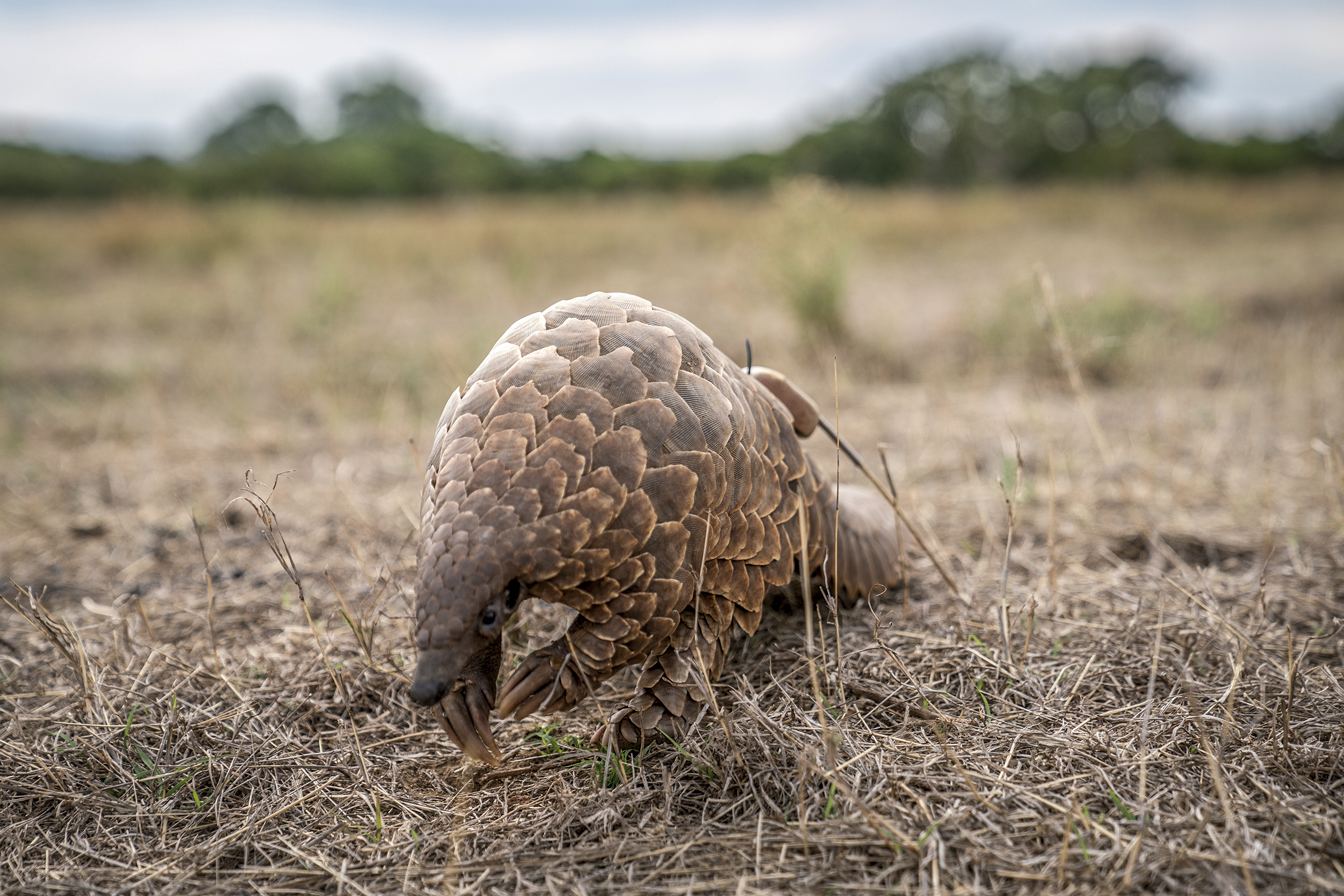
A pangolin forage usually lasts five to six hours. (Photo: Shiraaz Mohamed)
Bumper is one of hundreds of pangolins rescued from the illegal wildlife trade. He was intercepted at the Beitbridge Border Post after a poacher tried to smuggle him into South Africa from Zimbabwe. He was flown by helicopter to receive specialist medical care and was eventually released into the bush as part of his soft release programme. Bumper is named after the good Samaritan who sponsored the fuel for his flight.
“I’m very glad to report Bumper is doing really well and is adapting to the field. His behaviour is super healthy. Because he’s had human contact in the care of rehabilitation and the release process, he was habituated to humans. But now he’s losing his patience with people, which is fantastic because he’s losing that habituation and his wild instincts are on point,” says Meyer, whose testimony in court helped convict Bumper’s poacher. The poacher is now serving a six-year jail sentence.
Abuse in captivity
It doesn’t always go so well.
Pangolins rescued from poachers are often put under a huge amount of stress as they are subjected to all sorts of abuse while in captivity.
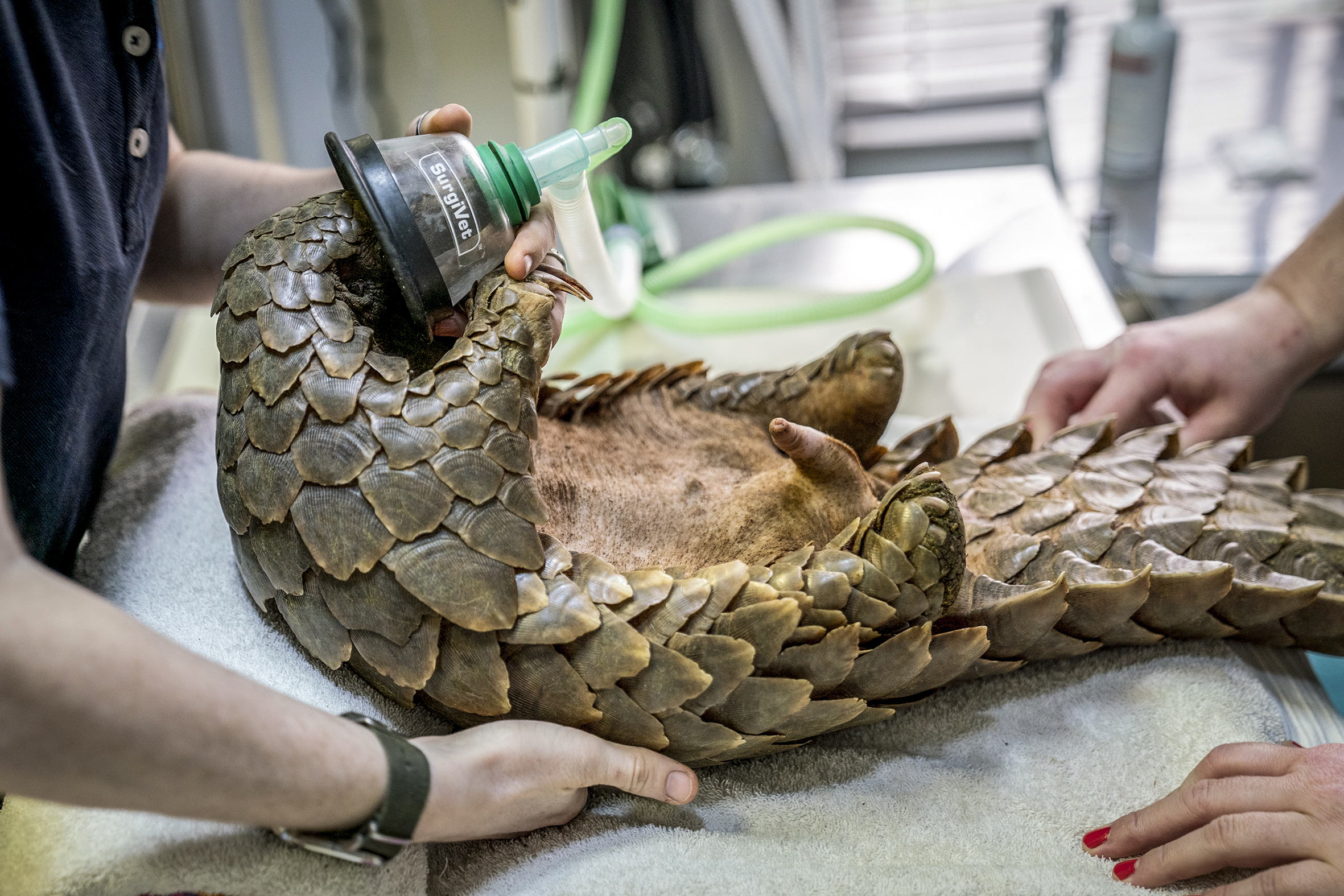
A rescued pangolin is anaesthetised before it is tube fed. (Photo: Shiraaz Mohamed)

An anaesthetized pangolin being tube fed. (Photo: Shiraaz Mohamed)
For weeks at a time, they can be kept in the boots of cars, in boxes, wired mesh structures, bags and rucksacks, washing baskets and cardboard boxes. Some are covered in diesel or petrol, or strong-smelling substances, to go undetected by sniffer dogs. They are sometimes tied up so they cannot escape and there have been cases of their limbs being cut off to prevent them from escaping.
Read more in Daily Maverick: “Standing up for the pangolin, the world’s most trafficked mammal”
Glen Thompson, a pangolin specialist for conservationist group Transfrontier Africa, recounts how he encountered a pangolin with a missing foreleg. The pangolin was found at a roadblock in Hammanskraal.
“I took the animal to hospital and as we tried to anaesthetise it to assess it, we discovered its right forearm was missing. There were maggot larvae and the distinct smell of decaying flesh … I was in tears, I had to actually leave the theatre room. Even though it was the most humane thing (euthanising it) to do, it was heartbreaking. It is the most severe case I have seen. I have dealt with horrific cases, but this to me sticks out in my memory the most. Just the pain and suffering it went through.”
Specialist treatment
Pangolins that are rescued in sting operations are taken to specialist hospitals or veterinarians for assessment and treatment before they are released back into the wild.
Provet, a specialist practice in Limpopo, serves as a first-response vet for many sting operations in the area.
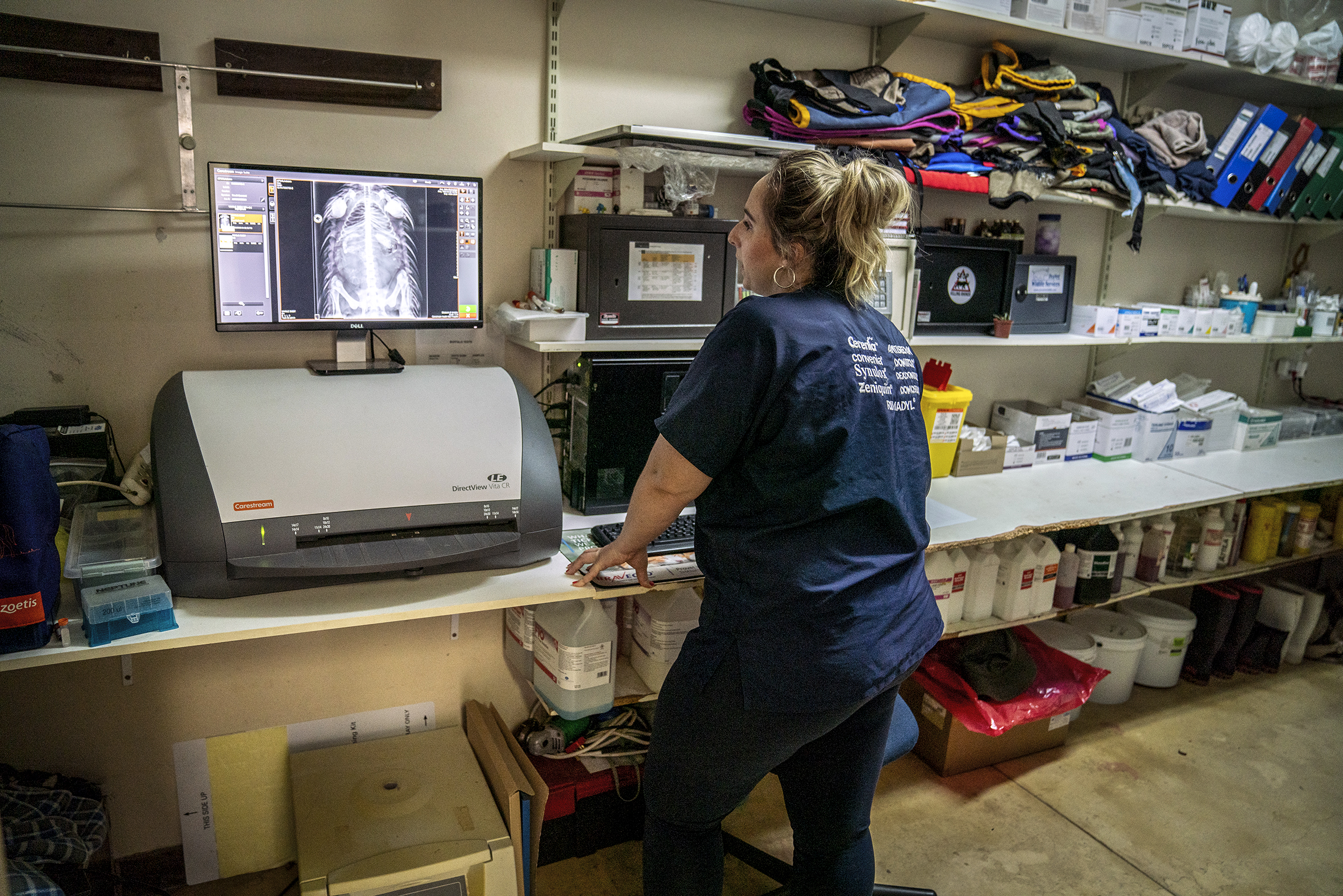
Dr Debbie English examines the x-ray of a rescued pangolin. (Photo: Shiraaz Mohamed)
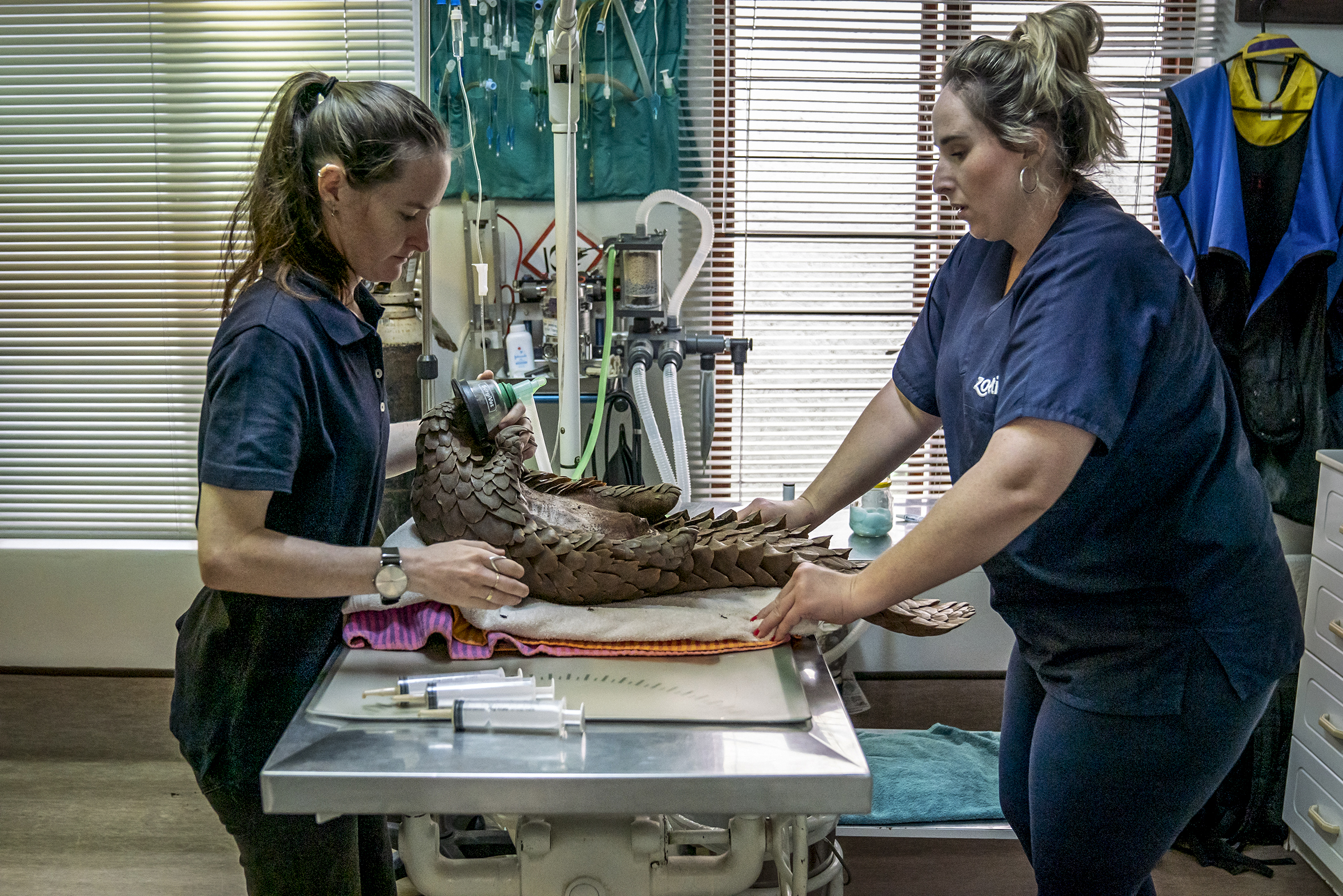
Dr Debbie English (right) and an assistant anaesthetise a rescued pangolin. (Photo: Shiraaz Mohamed)
Debbie English, one of two Provet vets in Limpopo specialising in pangolin treatment, describes parts of the process the rescued pangolins have to undergo. They are anaesthetised and put on a drip because of dehydration. Blood is drawn for tests and the animal is checked for wounds and injuries. Their internal organs are checked using x-ray, ultrasound and CT scan. Some of the animals are tube fed. They are constantly measured throughout their stay to monitor their progress.
“You look at these little animals lying under anaesthetic, with tubes in their mouths, monitors hooked up to them, drips running into them, and you just think, ‘What have they done to us to deserve this?’. It breaks your heart, but you know that it almost fuels you to carry on fighting for the next one that comes in. So it is incredibly hard and you take strain.”

Anaesthetized pangolins asleep after it was tube fed. (Photo: Shiraaz Mohamed)
Complications
Rescued pangolins often have complications such as pneumonia because of the conditions they’ve been kept in. In captivity, they often lie in their own urine and faeces, causing their lungs to take severe strain. They can also suffer from biliary, making them anaemic, and blood transfusions need to be performed from one pangolin to another to save them.
One resilient pangolin, Lilly, was rescued from the trade and brought to English. She suffered from extreme dehydration and was emaciated. It was also discovered that Lilly was pregnant. “The first thing they do is they miscarry in captivity, with all the stress and in hospital environments, even in rehab. But we got her through that,” English says.
Lilly went through the medical and rehabilitation processes and was released back into the wild with her pup. But a year later she was intercepted after being poached again. She was returned to English and her team, but this time in a much worse condition. She survived hospitalisation and was sent for rehabilitation when she collapsed while out foraging for food.
She was rushed to the hospital and was treated for anaemia and given a blood transfusion, and after being monitored she was taken back for rehabilitation. But her caregivers were not satisfied with her progress and Lilly was returned to the hospital, where she was diagnosed with Immune Mediated Hemolytic Anaemia, a condition where the body starts attacking its own red blood cells. As a result, she lost her pup.
“She became more anaemic from that, on top of the actual biliary. So we had to do another blood transfusion on her, and put her on high doses of cortisone to try to suppress her immune system. It’s been a long road with her, but she’s doing really well now. I think she’s our toughest case, because literally everything under the sun that could go wrong with her went wrong,” English says.
Read more in Daily Maverick: “Pangolins: Scales of Injustice by Richard Peirce”
Back to the wild
Rescued pangolins can spend anything from a few days up to three weeks in ICU, depending on their condition. Only once the vets are happy with their progress are the pangolins sent for rehabilitation in preparation for release back into the wild.
Housed off site in a secure location, Umoya Khulula Wildlife Centre facilitates the rehabilitation process. According to Umoyo’s Emma de Jager, “In the last four years we’ve seen such an influx in the poaching of these animals.”

Emma de Jager takes a pangolin on a foraging expedition. (Photo: Shiraaz Mohamed)
Pangolins, unlike most other creatures, will not feed in captivity, posing a challenge in the rehabilitation process. The only way for them to feed is for them to forage for themselves. They only eat ants and termites, and they’re very specific about the type of ants they consume.
So they are taken out to forage daily, for five to six hours at a time. Pangolins are primarily nocturnal, which means they can forage late into the evening, especially in summer. De Jager and her colleagues go out and dig up ant nests for the younger pangolins, which are unable to forage on their own.
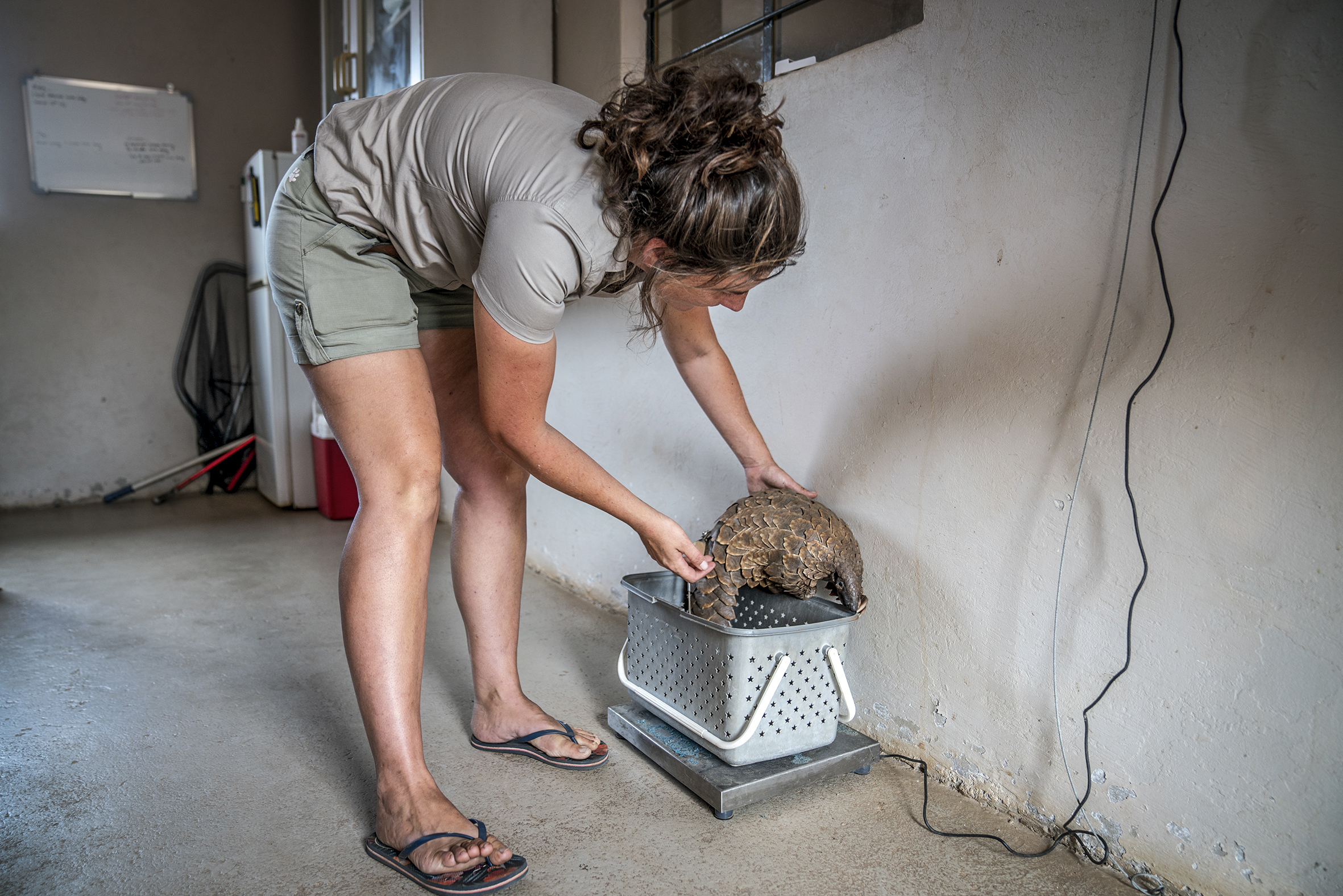
Emma de Jager measures the weight of a pangolin before it is taken out to forage. To measure their progress, weight is taken before and after foraging. (Photo: Shiraaz Mohamed)
Pangolins can be in rehab from three weeks up to nine months. “This is not a quick process for a lot of them, especially if they come in very young,” De Jager says.
Release sites
The search for a release site begins once the pangolin is stronger and in good health and begins to gain weight in rehab.
The release of pangolins into the wild is a difficult procedure. For the animal to adapt, suitable locations must be found. Several factors are considered – sites must be within pangolins’ natural distribution, where food and shelter are available, where the animal can be safe, and where the animal will not interfere with the natural population of pangolins, disrupting the wildlife population.
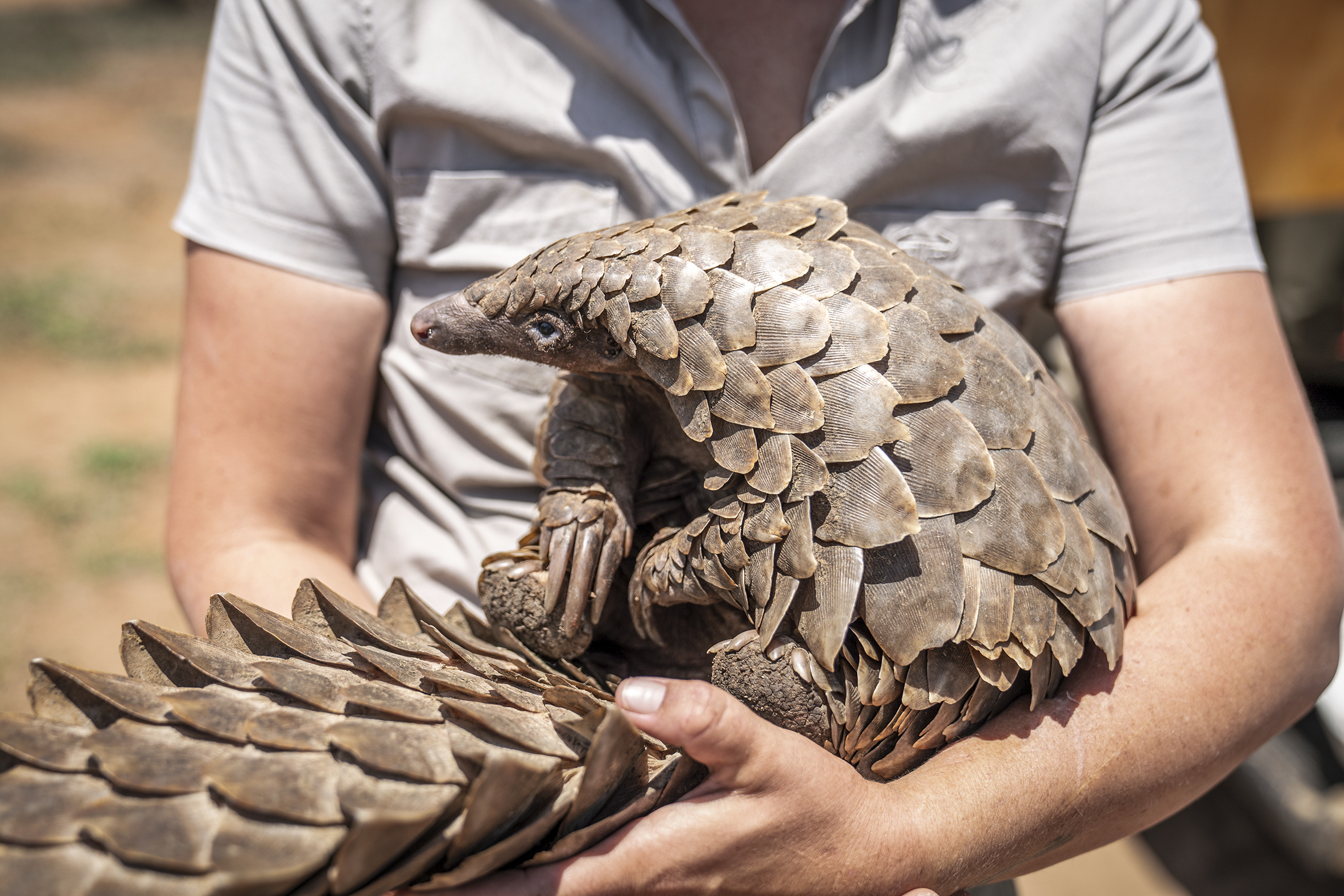
Emma de Jager holds a rescued pangolin. (Photo: Shiraaz Mohamed)
Each released pangolin is fitted with satellite and VHF (very high frequency) tags to help track its movements. This can also provide valuable data to researchers.
A pangolin is housed in a box for a few days after being transported to a release location. Every night, it is brought out for a walk, with the monitoring team following from a safe distance. The team observes its natural behaviour, such as whether the pangolin can locate shelter and food. They watch how the pangolin reacts to its new surroundings. While pangolins do not require much water, watching them drink is considered a bonus by monitors and researchers.
“Once we see those few signs and we’re happy that they’ve settled, we release them. There is an intense period of monitoring that follows, so the next day we will go to monitor them in the morning and in the evening. And again looking out for all the signs and just observing their physical behaviour, while collecting information,” Meyer says.
Visit Daily Maverick’s home page for more news, analysis and investigations
The pangolins are weighed frequently at the beginning as it is one of the only few indicators of its health. An animal might eat, but it could be fighting an internal infection. Monitors could observe that the animal is eating, but that will not necessarily mean that it is maintaining weight or condition. Scat samples are taken, which is a non-evasive method for further research and assessing their health.
In cases where a pangolin is physically healthy but mentally traumatised, human interaction is almost entirely removed and monitors rely on satellite tags to track its movements. Trail cameras with motion sensors are especially useful since they give crucial information to researchers and monitors while they are not in the field. The cameras are strategically positioned near the pangolin’s burrow.
The pangolins are followed for up to four months, with the monitoring team reducing their hands-on time. They start weighing them less and obtaining fewer visuals until they restrict physical contact with the animal to once a week or once every two weeks. If no further illness is detected or the animal is not going to be observed for research, as in Meyer’s case, the tags are removed and the pangolin is deemed to be rewilded.
George*, who works for Transfrontier Africa (*not his real name as he is involved in undercover sting operations to catch pangolin poachers), concludes: “We don’t know enough about these animals in order to be able to say, what we’re doing now is groundbreaking work. We need to develop a database of information so we can make more educated decisions for conservation and to prevent the illegal trade from growing exponentially.” DM/OBP


















 Become an Insider
Become an Insider
Comments - Please login in order to comment.